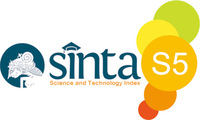Xenophilia in the South Korea news media and its implication on Korean teaching based on critical pedagogy
Abstract
Keywords
Full Text:
PDFReferences
Akbari, R. (2008). Transforming lives: introducing critical pedagogy into ELT classrooms. ELT Journal, 62(3), 276-283. doi:10.1093/elt/ccn025
Antweiler, C. (2009). Was ist den Menschen gemeinsam? Über Kultur und Kulturen (2nd ed.). Darmstadt: WBG.
Ashton, M. C., & Lee, K. (2007). Empirical, theoretical, and practical advantages of the HEXACO model of personality structure. Personality and Social Psychology Review, 11, 150-166.
Chen, C. M., & Chang, Y. J. (2019). A Study on Development and Current Application of Motion Graphic in Taiwan’s Popular Music. PEOPLE: International Journal of Social Sciences, 5(1). https://doi.org/10.20319/pijss.2019.51.124134
Freire, P. (2005). Pedagogy of the oppressed. New York: The Continuum International Publishing Group Inc.
Gustavsson, E. (2015). ‘ Using Critical Pedagogy in the Teaching of English in Sweden as an Approach to Highlighting Xenophobia .’
Halliday, M. A. K. (Michael Alexander Kirkwood), and Christian M. I. M. (2004) Matthiessen, An Introduction to Functional Grammar.
Hermawan, B. (2013). Multimodality: Menafsir verbal, membaca gambar, dan memahami teks. Jurnal Pendidikan Bahasa dan Sastra, 2013, Vol. 1 No. 19-28.
Hutagalung, dkk. (2019). Diplomasi Publik Korea Selatan di Indonesia Melalui King Sejong Institute Center Indonesia. Jurnal Ilmiah Hubungan Internasional, Vol. 15 No. 2
HyeKyung Kim. (2017). Critical Thinking and Critical Pedagogy in English Language Teaching. The Linguistic Association of Korea Journal, 25(4), 41–58. https://doi.org/10.24303/lakdoi.2017.25.4.41
Jeyaraj, J. J., & Harland, T. (2014). Transforming teaching and learning in ELT through critical pedagogy: An international study. Journal of Transformative Education, 12(4), 343-355. doi: 10.1177/1541344614550042
Kress, G. (1996). Representational resources and the production of subjectivity: Questions for the theoretical development of critical discourse analysis in a multicultural society. In C. R. Caldas-Coulthard & M. Coulthard (Eds.), Texts and practices: Readings in critical discourse analysis (15-31). London: Routledge.
Kress, G. and Leeuwen, T. (2001). Multimodal discourse. London: Arnold
Kress, Gunther dan Leeuwen, T. Van. (2006). Reading Images The Grammar of Visual Design.
Ledema, R. (2003). Multimodality, resemiotization: Extending the analysis of discourse as multi-semiotic practice. Visual Communication, 2(1), 29–57. doi: 1470-3572(200302)2:1; 29–57;029751
Lirola, M. M. (2006). A critical analysis of the image of immigrants in multimodal texts. Linguistics and the Human Sciences, 2(3), 377–397. doi : 10.1558/lhs.v2i3.377
Mustikawati, R. (2020). The bigger wave of Hallyu 한류 in Indonesia Glocalization. People: International Journal of Social Sciences, 6(1), 367- 378. https://doi.org/- https://doi.org/10.20319/pijss.2020.61.367378
Revki, Delvi Rama & Saefur, Rochmat. (2018). Character Education at MAN 3 Palembang Boarding School. Advances in Social Science, Education and Humanities Research, volume 323, hal. 301.
Skolverket. (2011). Läroplan, examensmål och gymnasiegemensamma ämnen för gymnasieskola 2011. Västerås: Edita.
Strange, N. Y. (2001). The effects of journal writing on the reflective metacognitive analysis and study skills of college students enrolled in a critical reading and thinking course.(Doctoral dissertation). Temple University, Philadelphia, USA.
Stürmer et al., (2013) . Psychological Foundations of Xenophilia : The Role of Major Personality Traits in Predicting Favorable Attitudes towards CrossCultural Contact and Exploration. Institut fur Psychologie, Fern Universitat in Hagen.
Sukyadi, Didi, dkk (2018) Multimodalitas Dalam Pembelajaran Bahasa Inggris. Bandung: Universitas Pendidikan Indonesia Press.
Thomas, D. R. (2006). A general inductive approach for analyzing qualitative evaluation data. American Journal of Evaluation, 27, 237–246. doi:10.1177/1098214005283748
DOI: https://doi.org/10.17509/jokal.v5i1.88917
Refbacks
- There are currently no refbacks.
Copyright (c) 2025 Universitas Pendidikan Indonesia (UPI)

This work is licensed under a Creative Commons Attribution-ShareAlike 4.0 International License.

Journal of Korean Applied Linguistics published by Universitas Pendidikan Indonesia is licensed under a Creative Commons Attribution-ShareAlike 4.0 International License.




